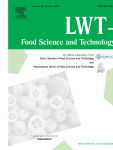Ver ítem
- xmlui.general.dspace_homeCentros e Institutos de InvestigaciónCIA. Centro de Investigaciones de AgroindustriaInstituto de Tecnología de AlimentosArtículos científicosxmlui.ArtifactBrowser.ItemViewer.trail
- Inicio
- Centros e Institutos de Investigación
- CIA. Centro de Investigaciones de Agroindustria
- Instituto de Tecnología de Alimentos
- Artículos científicos
- Ver ítem
Impact of extracellular nucleic acids from lactic acid bacteria on qPCR and RT-qPCR results in dairy matrices : implications for defining molecular markers of cell integrity
Resumen
In this study, we evaluated whether quantitative PCR (qPCR) and reverse transcription-qPCR (RT-qPCR) results could be affected by extracellular (free) DNA or RNA, respectively, obtained either from isolated bacteria or from fermented dairy foods manufactured with these microorganisms. These experimental set-ups involved two starter lactic acid bacteria (SLAB), Streptococcus thermophilus and Lactococcus lactis, as models across their most common
[ver mas...]
In this study, we evaluated whether quantitative PCR (qPCR) and reverse transcription-qPCR (RT-qPCR) results could be affected by extracellular (free) DNA or RNA, respectively, obtained either from isolated bacteria or from fermented dairy foods manufactured with these microorganisms. These experimental set-ups involved two starter lactic acid bacteria (SLAB), Streptococcus thermophilus and Lactococcus lactis, as models across their most common technological environments: yoghurt, milk and cheese. The presence of free DNA modified qPCR results in levels sufficient to bias SLAB determinations, indicating that DNA may be a poor measure of cellular integrity. Furthermore, we showed for the first time that an order of magnitude more of free RNA than of DNA had to be used to modify RT-qPCR results. Importantly, the interference produced by free DNA and RNA was maintained across all the dairy matrices evaluated, independently of the SLAB and of the source of nucleic acids used, in both negative and positive samples. This study suggests that, contrary to DNA molecules, mRNA from dead microorganisms or from other extracellular sources may not be a determinant factor in skewing molecular quantifications. Therefore, our results support the potential use of mRNA as a molecular signature of cell integrity in dairy matrices.
[Cerrar]

Fuente
LWT - Food science and technology 80 : 416-422. (July 2017)
Fecha
2017-07
ISSN
0023-6438
Formato
pdf
Tipo de documento
article
Palabras Claves
Derechos de acceso
Restringido
 Excepto donde se diga explicitamente, este item se publica bajo la siguiente descripción: Creative Commons Attribution-NonCommercial-ShareAlike 2.5 Unported (CC BY-NC-SA 2.5)
Excepto donde se diga explicitamente, este item se publica bajo la siguiente descripción: Creative Commons Attribution-NonCommercial-ShareAlike 2.5 Unported (CC BY-NC-SA 2.5)

